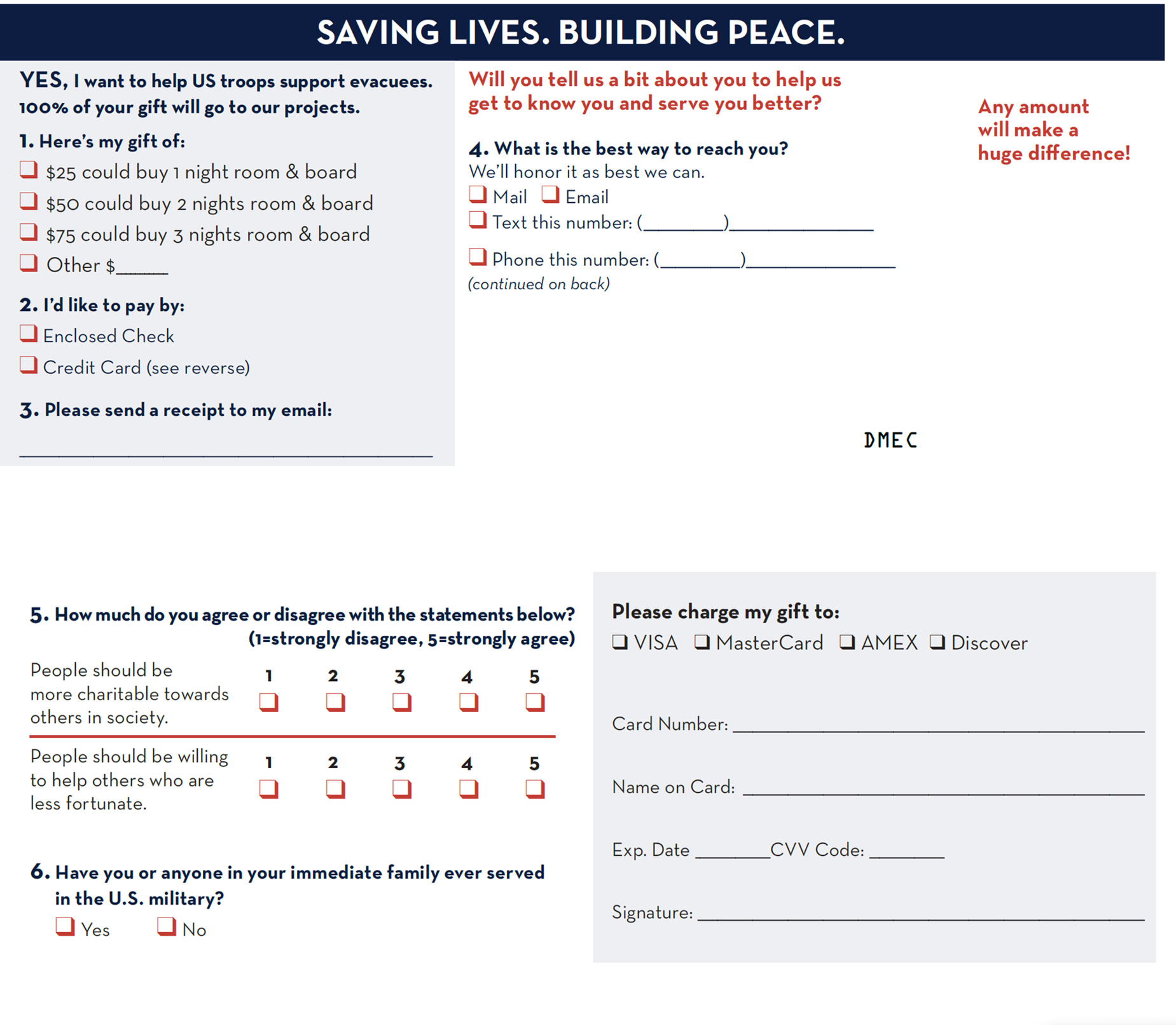Don’t Ask if You Don’t Care About the Answers
Zero party data is the data that voluntarily comes from your donors. It’s their voice. You might say we built a company around the value of it.
This data is proprietary, you don’t sell or trade it in the co-op mills taking in others’ mailing list laundry. You keep it to yourself and you use it to tailor the message and experience to match what you now know makes Donor A different from Donor B in a way that matters to the giving decision.
This post is about collecting data via a form or survey. We often bake it into the fundraising process but also as a stand-alone communication whose sole purpose is collecting critical, missing data you’ll never find on your CRM or in the 3rd party data world.
When you ask your supporters questions about themselves that are germane and contextually relevant it’s called “engagement”. It doesn’t make the experience worse, it makes it better. It doesn’t hurt the chances they respond, it increases it. And the data about them–given by them –is a gift that keeps on giving.
More fields on the form and multiple “asks” only hurt conversion and experience if it’s poorly conceived.
Here’s a recent test for one of our Agency of Record clients (we do all the mail and digital) to illustrate and prove the point.
This was an acquisition mailing. And as avid Agitator readers know DonorVoice would never send out one version to all. We tagged the acquisition list with 3rd party data to create two Identity segments specific to this charity’s mission, “Humanitarian” and “Military”. We’d then often tag with Personality Tags to further segment and tailor because not all Humanitarians/Military are the same.
There were lots of differences between the two versions (story, image, messaging, everything) but we also did a within-the-group test that only altered the reply.
The only noteworthy part of this control is the symmetrical design of the ask string. Often times groups attach different, tangible items to each dollar handle – e.g., $25 buys X blankets, $50 buys Y food kits. This creates confusion. Don’t do it. The symmetry of dollar amounts going up in lock step with the benefit/item is easier for donors to process and make a choice. We’ve tested it head to head and symmetry wins. The “laundry list” approach also takes up much more staff time to concoct and get approved. The simpler approach is a win-win.

Here is the test version, front and back. This increased response by 33% in the Humanitarian and Military audiences. But that isn’t the biggest asset gained here.

- Question 5 is a 2-item scale measuring what we call a Helper Identity. This will get coded into the CRM as High or Low Helper. All High helpers will have messaging that plays back their belief structure. Note messaging about what they believe has nothing to do with the charity or mission. It’s a message to show we know who they are.
- Question 6 is also recorded into the CRM and used to further tailor messaging tied to who they are.
- Most people filled these questions out.
- Even if they didn’t we coded them into the Humanitarian or Military audience segment based on which version they received.
Contrast this with the utter-garbage, faux, contrived, trickery based “surveys” used to improve response rates in the immediate term. A tactical device that pollutes the collective commons.
How dumb do we think people are? What low level of respect do we have for those willing to give us their hard earned money that we use these contrived approaches?
There is an alternative and a better way. Better for your organization and your donors and your bottom line.
Don’t bother asking if you couldn’t give two rips about the answer.
Kevin



Thanks for connecting the value of curating and collecting this engagement data for your organizations (and adding to the CRM). I couldn’t agree more! In this example you are the agency of record, so you are then managing it across all communications and segments. The only thing I would add, is if there are multiple partners/agencies the importance of sharing the value of this data for segments or models so it is managed consistently across all channels (including events) and for Mid, Major and Planned Giving and even Program selections and messaging. Never assume all parts of the organization know about what is captured. Share and educate loudly. It’s a win-win and a team effort.
Thanks Mary Beth for the feedback and comment. Agreed that this type of data that is describing innate parts of who folks are cuts across channel and differing, internal segments tied to gift type, amount etc. Think of this as horizontal segmentation – you have Identities and Personalities that unite and bind folks and they cut across the myriad of vertical ways we slice the world – functional depts, internal donor descriptors of channel, mid, major, planned, event etc.
Interesting! Might you share the total number (or percent) of responses across 1-5 for Question #5a and 5b? Also, how many people chose a significantly different number for #5a than 5b (I’m guessing not many?), and how do you code those individuals? Thank you!